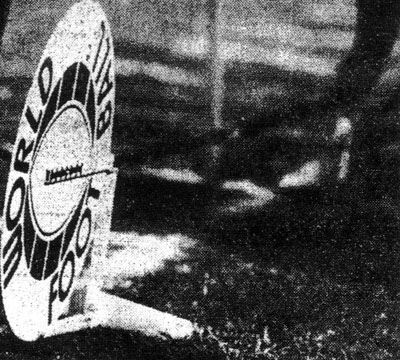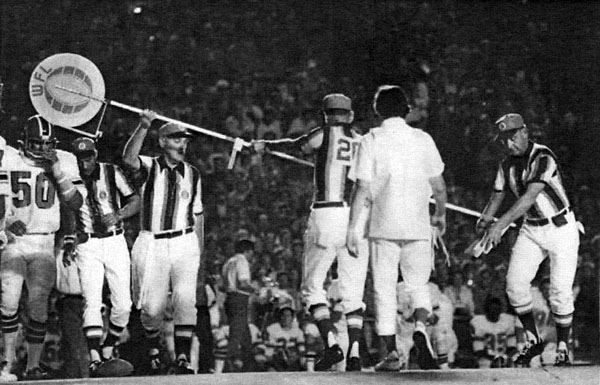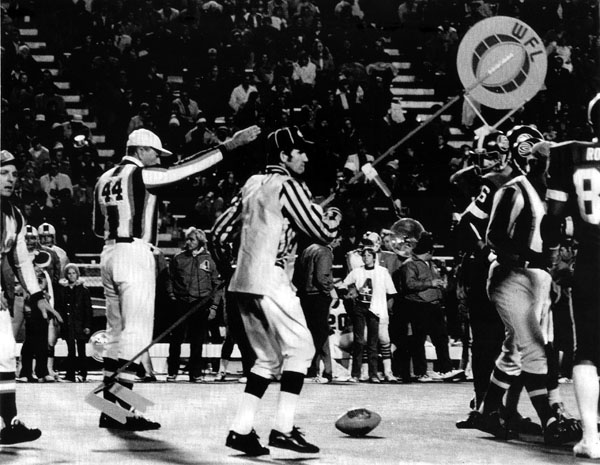


-
WFL

-
1974 Season

-
1975 Season

-
Multimedia


Dickerod
The World Football League ushered many new innovations to the game of football in 1974, but the most unique was "The Dickerod."
Named after its inventor (George Dicker), this device was a single stick (yellow in color with the WFL logo at the top), ten feet tall, mounted on a base which allowed it to pivot from side to side. The stick was swung down to ground level when a first down was being set, and a marker that slid along the shaft was fixed in place to line up with the nearest gridiron line (the major yard lines spaced every five yards). When ball placement was set, the stick was swung back to the upright position. When a measurement was needed by the officials, the Dickerod was brought out to the ball position, the shaft swung down to ground level, the marker lined up with the nearest gridiron line, and the measurement was taken. (In all other forms of football today, a similar marker is clipped to the standard ten-yard chain, also lining up with a gridiron line.) Proponents of the Dickerod claimed the measurements were more accurate and the devise narrowed the inaccuracies of the more traditional chain system.
The Dickerod was not used in WFL play in 1975.

The Dickerod used to measure a First Down.

WFL Referees using the Dickerod at Soldier Field.

WFL Referee Barry Brown signals a First down after the Dickerod is used during the World Bowl.
| The Dickerod - Portland Storm vs. Memphis Southmen | |
| Date - July 18, 1974 |  |
| Location - Memphis Memorial Stadium, Memphis, Tennessee | |
| Dickerod is used to signal a Memphis First Down. | |
NOTE: This film clip is property of WFL Films and may not be used without the written consent of the Web site owners.
© Copyright 1996-2007 Robert Phillips, All Rights Reserved